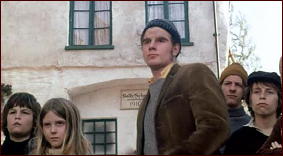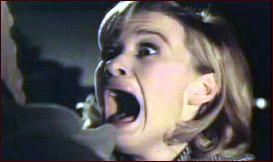Mon 2 Jan 2017
A Movie Review by Jonathan Lewis: DOOMWATCH (1972).
Posted by Steve under Mystery movies , Reviews[6] Comments

DOOMWATCH. Tigon Films, UK, 1972. Released in the US as Island of the Ghouls, AVCO Embassy Pictures, 1976. Ian Bannen, Judy Geeson, John Paul, Simon Oates, Jean Trend, George Sanders. Screenwriters: Kit Pedler & Gerry Davis. Director: Peter Sasdy.
Based on the popular BBC television series of the same name, Doomwatch follows the work of the eponymous fictional British government scientific agency tasked with investigating environmental threats. In this feature length theatrical release from Tigon British Film Productions, actors John Paul and Simon Oates reprise their roles as Dr. Spencer Quist and Dr. John Ridge, respectively.
But the star of the proceedings is Scottish actor Ian Bannen who portrays Dr. Del Shaw, an intense man who doesn’t easily take no for an answer when it comes to his investigations. The plot follows Dr. Shaw as he probes into strange goings on occurring on Balfe, an isolated island off Cornwall. Initially sent there by Doomwatch to investigate pollution, he soon discovers that the islanders are not only an odd, insular sort, but also that they are hiding something dark and disturbing. His suspicions are readily confirmed when he encounters a dog that is unusually violent and a child’s body buried in a local forest.

But what is really happening on Balfe? The locals seem to believe that somehow they are the victims of a cosmic hex or divine judgment.
Good scientist that he is, Shaw thinks this is just superstitious and religious hokum. So he enlists schoolteacher Victoria Brown (Judy Geeson), an outsider to the island community who has been working as an educator there, to find out why the townsfolk are so darn secretive.
As it turns out, the mystery itself is more captivating than the ultimate revelation. [SPOILER ALERT.] Many of the islanders are suffering from a disease caused by exposure to a toxic stew of chemicals and radioactive waste dumped in the local fishing grounds by an unscrupulous waste disposal company and the British Navy. This is nothing remotely supernatural happening on Balfe. Just all too human behavior: fear in the face of human villainy and greed.